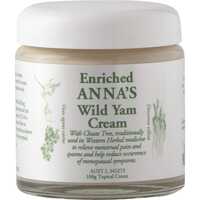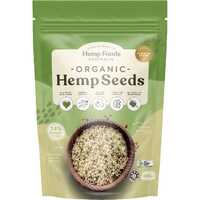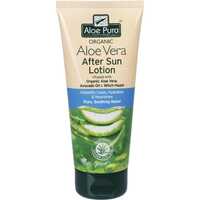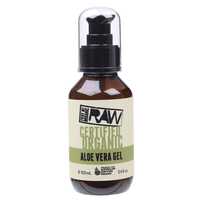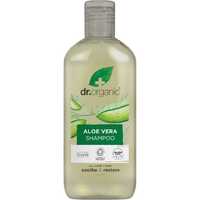Aloe vera is a versatile plant known for its many health and beauty applications. This much-loved plant has been used across the world for centuries, from ancient Greece and Arabia to South America, Asia, and the New World. Applied for cleansing, protection, nourishing, and healing, aloe vera is one of the most useful plants in the entire world. It has grown in popularity over recent years, with this wonderful plant central to many topical beauty products and increasingly added to health drinks and supplements.
Let’s dive into the wonderful world of aloe vera. We’ll review its rich history, look into its health benefits, and list the most popular aloe vera products on the market today.
What is Aloe Vera?
Aloe vera is a well-known succulent widely used in the fields of health, beauty, and complementary medicine. It’s the most popular member of the Aloe genus, which contains over 650 different flowering plants. Aloe vera refers to the specific aloe plant Aloe barbadensis Miller, which is also known as Chinese aloe, Cape aloe, or Barbados aloe. Aloe vera is an evergreen perennial with thick fleshy leaves, and it grows to a maximum height of 100 cm.
History of Aloe Vera
Despite widespread global adoption, aloe vera comes from a very specific place. This much-loved plant is native to the Al Hajar Mountains in northeastern Oman in the southeast region of the Arabian Peninsula. Aloe vera soon spread beyond its mountain home — with the ancient Egyptians, Greeks, Indians, Mexicans, and Chinese all adopting it and using it for medicinal purposes. Far from a modern discovery, this fleshy aloe plant has long been known for its health, beauty, and medicinal properties.
The name aloe vera comes from the Arabic word “Alloeh,” which means “shining bitter substance.” The “vera” part is Latin for “true,” which highlights its powerful reputation as a universal panacea. The Egyptians called aloe vera “the plant of immortality,” and while it won’t make you live forever, it can support youthful hair and glowing skin. Queen Nefertiti and Queen Cleopatra were known to use aloe vera as part of their beauty regimes, and over time, cultures around the world discovered its amazing properties.
Along with Egyptian queens, this wonderful plant has also been linked with Alexander the Great and Christopher Columbus, both of whom used it to treat soldiers’ wounds. Along with skincare, wound healing, rashes, acne, and cold sores, aloe vera was also used historically for constipation and applied as a treatment for chronic and severe radiation dermatitis. The aloe vera plant is still used widely for all these purposes, including prominent roles in cosmetics and dermatology.
Aloe vera is easy to grow, and it’s been successfully cultivated around the world in a variety of climates. Today, aloe vera is considered to be naturalised in North Africa, Sudan and neighbouring countries, the Canary Islands, Cape Verde, the Madeira Islands, the Algarve region of Portugal, and many parts of southern Spain. This wonderful plant is also farmed commercially around the world for widespread use by the cosmetics and natural health industries.
The Active Components of Aloe Vera
The aloe vera plant features fleshy triangular leaves with serrated edges, yellow flowers, and fruits with many seeds. Most of aloe vera’s goodness comes from its leaves, which are composed of three layers. An inner clear gel contains 99% water with glucomannans, amino acids, lipids, sterols, and vitamins. The middle layer features latex with anthraquinones and glycosides, and a protective outer layer synthesises carbohydrates and proteins while transporting water and starch.
Most of the active components in aloe vera come from the first two layers, especially the inner gel substance. The plant contains 75 potentially active constituents, from vitamins and minerals to enzymes, amino acids, fatty acids, and sugars. The following components are the most noteworthy:
- Vitamins A, C, and E — all of which are antioxidants. There’s also vitamin B12, folic acid, and choline.
- Minerals such as calcium, chromium, copper, selenium, magnesium, manganese, potassium, sodium, and zinc.
- Enzymes, including aliiase, alkaline phosphatase, amylase, bradykinase, catalase, cellulase, lipase, and peroxidase.
- Amino acids, with only 2 of 22 not found. It also has 7 of the 8 essential amino acids.
- Fatty acids, including 4 anti-inflammatory plant steroids: cholesterol, campesterol, β-sitosterol, and lupeol.
- Sugars, including monosaccharides (glucose and fructose) and polysaccharides.
- It also contains salicylic acid (anti-inflammatory and antibacterial), lignin (enhances penetration), and saponins (antiseptic).
How Does Aloe Vera Work?
Aloe vera is incredibly effective when used topically, and it also offers potential benefits when consumed orally. There are numerous mechanisms of action, with the compounds listed above used by the body to heal, protect, and nourish. The following biological mechanisms support various beauty and clinical applications:
Healing
The healing properties of aloe vera are due to glucomannan (a mannose-rich polysaccharide) and gibberellin (a growth hormone). These components help to increase collagen synthesis, which boosts the amount of collagen and alters how it’s composed. With more collagen, you heal from wounds faster and generate better scar tissue.
Protection
The protective properties of aloe vera are partly due to metallothionein. This antioxidant protein is generated in the skin to scavenge free radicals and support sun protection. Aloe vera can also be effective in the treatment of burns, with one study highlighting advantages for wound healing and pain relief.
Nourishment
The nourishing properties of aloe vera are due mostly to mucopolysaccharides, which help to bind moisture into the skin. Among other things, aloe vera helps to produce collagen and elastin fibres, which make the skin more elastic and less wrinkled. It also softens the skin by helping epidermal cells to stick together, and it acts as an astringent to help tighten pores.
Along with healing, protection, and nourishment, aloe vera also has anti-inflammatory, immune-boosting, laxative, antiviral, antiseptic, and antitumour activities. With lots of active compounds and multiple mechanisms of action, it has found use in many popular topical and oral products.
Popular Aloe Vera Products
Aloe vera is widely used in cosmetics and dermatology, and it’s increasingly used in natural foods, drinks, and healthcare supplements. From skincare to oral health to hair products to foods, the following products are among the most popular:
Skin lotion
Applying aloe vera topically is a great way to moisturise your skin. The gel-like consistency of the leaves feels great, and it’s also amazing as a cream. You can apply aloe vera straight from the ground or purchase a ready-made skin lotion or gel. Commercial products often add other beneficial ingredients to maximise the effects, including nourishing vitamin E, skin-friendly vitamin C, and powerful natural antioxidants. With fantastic soothing properties, aloe vera works especially great as a lip balm.
Healing gel
Along with nourishing skin lotions and gels, aloe vera has fantastic protective properties for healing. From cuts and rashes to burns and acne, aloe vera helps to soothe the skin and support the natural healing process. Aloe vera gel also contains compounds to fight inflammation, which makes it very helpful in easing eczema, psoriasis, and other skin conditions.
Sun care
Aloe vera is regularly added to sun care products, both protective sunscreen and healing aftercare. While it doesn’t provide adequate protection against the sun, it provides a gentle, nourishing element. When used during aftercare, the soothing and hydrating properties of aloe vera really come to life. Natural aloe vera sun care products often include things like vitamin E, avocado oil, almond oil, chamomile, and lavender for maximum effect.
Hair care
Aloe vera is often added to hair care products, including shampoos and conditioners. The fatty acids in the plant have anti-inflammatory properties, which even help to fight dandruff. In addition, aloe vera makes a great hair cleanser, as it goes deep without stripping your hair strands. With vitamins A, C, and E, aloe vera will support healthy cell turnover, boost hair growth, and promote shiny youthful hair.
Oral care
Aloe vera is great for oral care, and it’s often added to toothpastes and mouthwashes. When combined, aloe vera and tea tree oil can help to fight bacteria, nourish your mouth, and freshen your breath. The consistency of aloe vera is ideal for toothpaste, especially when it’s combined with natural flavouring and other healthy ingredients.
Digestive health
Last but not least, aloe vera continues to grow in popularity as a food and drink product. According to studies, consuming aloe vera may help to improve digestive health and cure specific stomach ailments like irritable bowel syndrome. It may also inhibit the growth of certain bacteria, and it’s been proposed as a novel effective natural agent in combination with antibiotics.
Aloe vera gel is generally safe to eat, at least in small doses. However, the latex found inside the leaf has a number of potential health risks. If you want to be extra safe, you can purchase ready-made aloe vera drinks and other products containing small amounts of processed aloe vera. Whatever you do, avoid eating commercial lotions and gels containing aloe vera.
If you want to get more aloe vera in your life, Healthy Being is a great place to start. We have aloe vera lotions, gels, lip balms, shampoos, conditioners, and more. Everything is available at heavily discounted prices and ready to ship direct to your door. Shop now and enjoy free shipping options across Australia and worldwide delivery!


 Certified Organic
Certified Organic Vegan Friendly
Vegan Friendly  Vegetarian
Vegetarian Organic Ingredients
Organic Ingredients Dairy Free
Dairy Free Gluten Free
Gluten Free Keto Friendly
Keto Friendly

















